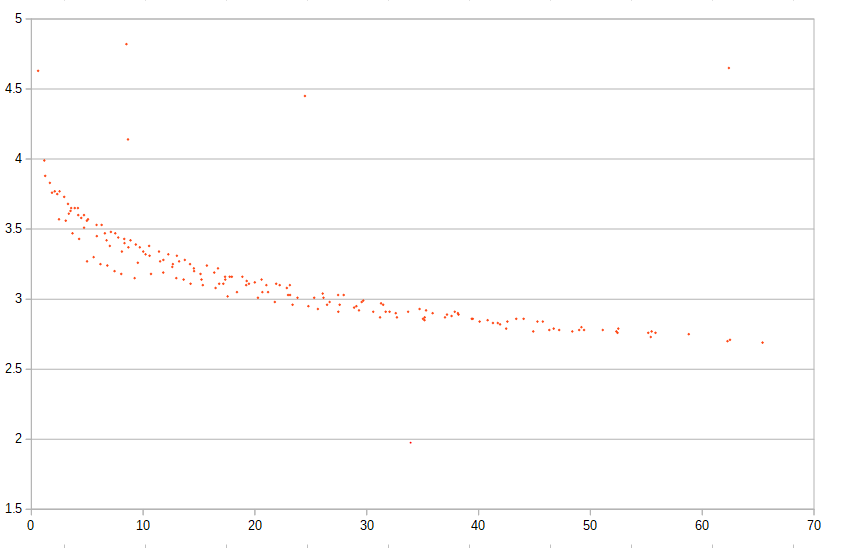Note to anyone reading this thread and thinking - Whoa! this is way too complicated. Most of the commonly available CTs have been measured and all you need to do to use them is select the model from a configuration dropdown list. This thread deals with how to use a CT that is not in the tables. I am disappointed that after spending considerable money, time, and effort to collect multiple samples of the common CTs, not a single user has come forward with option A to send me samples of other CTs and contribute to the overall success of this project. I get a lot of “Gee thanks for all the work you’ve done”, but not much what can I do to contribute?
This data indicates that this CT has nearly the same phase shift as your VT, whatever that is. The net shift measured is about -0.20° (lag). So you would add that value to the phase correction of your VT (shown in the configure inputs display) to arrive at a reasonable field value for this new CT. If you have an Ideal 77DE-06-09(EU) for instance, the phase adjustment for that is +1.78° (leads) -0.2° = +1.58°. Call it +1.6°.
CAVEAT: This is a provisional field measurement. There are a lot of variables involved with phase correction, most notably the fact that phase shift is a function of primary current, and it’s particularly volatile at low primary current. Here’s that function for the ubiquitous SCT013-000.
You will notice that in the tables IoTaWatt uses a phase correction of 3°. That’s pretty accurate at 20-30A primary current, as might be expected on a European main.
Phase shift is also pretty significantly affected by line frequency. It is greater at 50Hz than at 60Hz. although it affects both the VT and CT similarly, so the net is usually not that much different when using 60Hz phase adjustments in a 50Hz environment.
Burden value also affects shift. So if you are using that SCT013-000 to measure a low current circuit and decide to increase the burden to get better range, you increase the phase shift. Better to use a lower turns (and shift) CT in the first place.
Finally, these measurements are only valid with pure sine-wave signals. I take pains to insure a good quality AC signal and a pure resistive load when I measure these adjustments. I also don’t use a VT and the algorithms for sampling are tuned to remove sampling shift and there is no capacitive shift in the reference signal.
So these numbers are fine for your own use in the field, but I would caution anyone else to do their own, and encourage folks to send me samples of CTs that are not in the tables so that I can add these devices to the tables with controlled measurements.
![]() I started using a couple of SCT-006-000 and SCT-013-000 in a temporary setup just to play around with it.
I started using a couple of SCT-006-000 and SCT-013-000 in a temporary setup just to play around with it.
